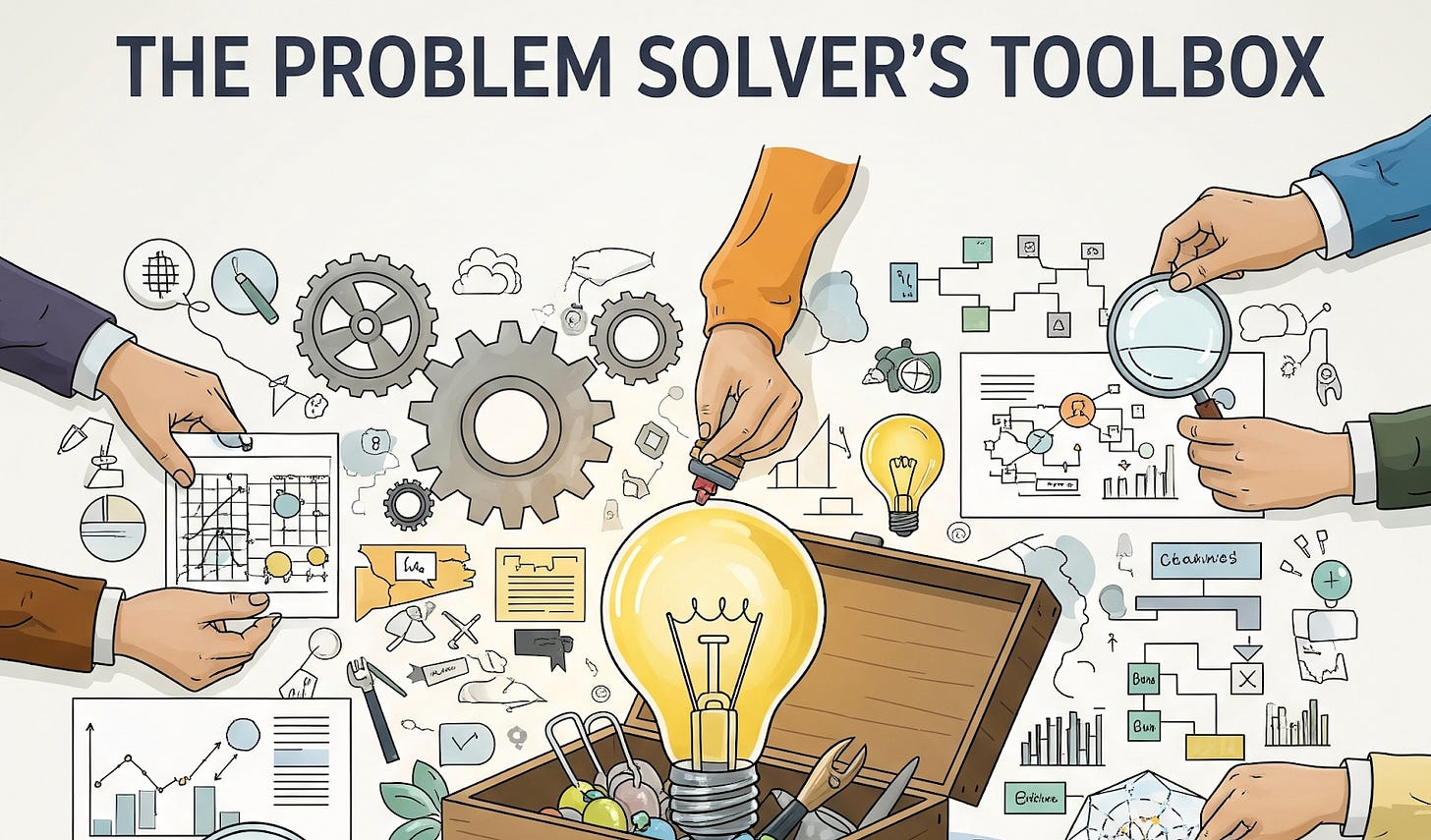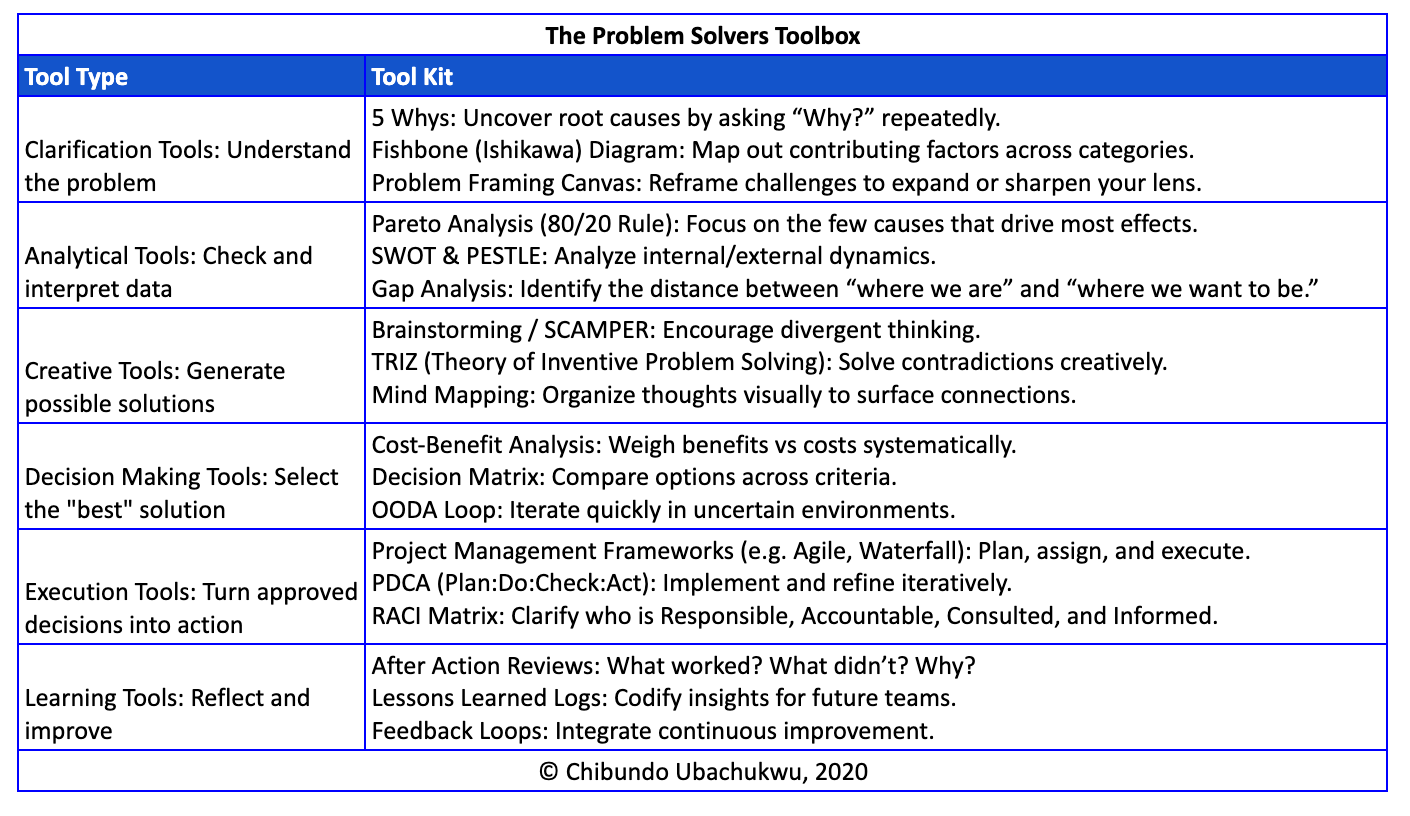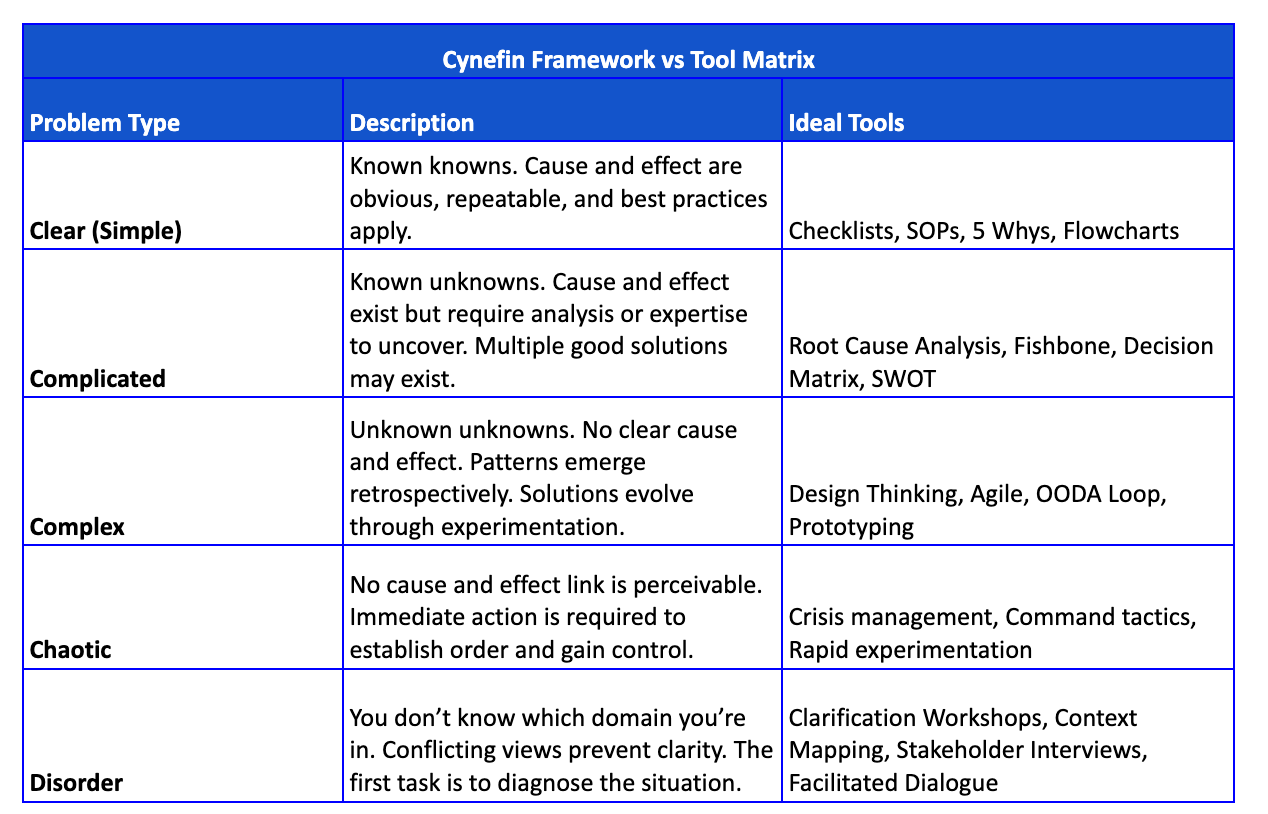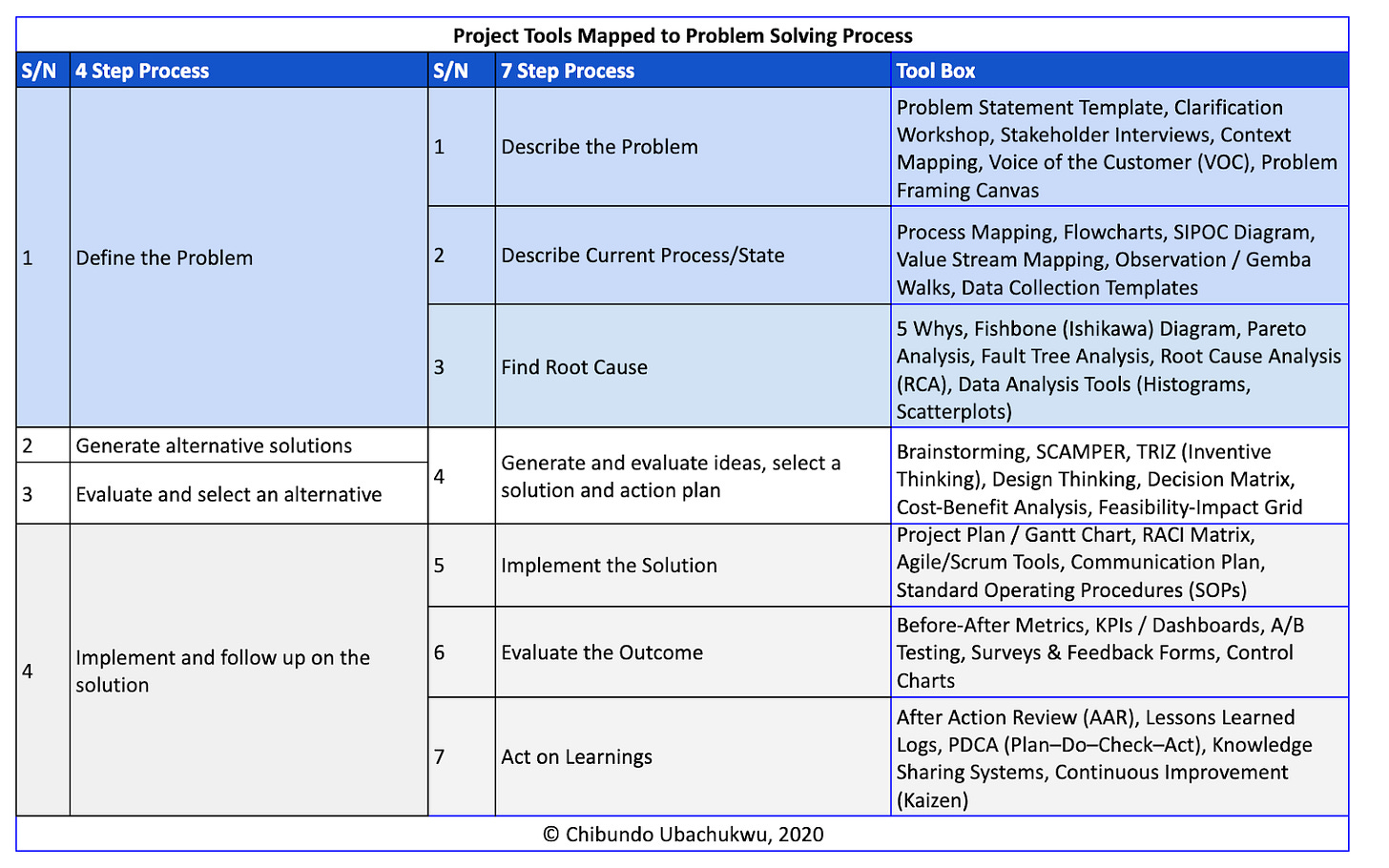A number of tools and techniques are available for problem-solving. Most can be used across multiple methodologies and approaches. Sometimes, tables speak as loudly as pictures, so I will summarize most of the learnings here in tables.
Next, we look at how to choose the right problem-solving tool. Not all problems are created equal, and not all tools work the same across different contexts. The key to effective problem-solving is diagnosis: first, understand the type of problem you're facing, then choose a tool that fits.
1. Use the Cynefin Framework to classify the nature of the problem: The Cynefin Framework classifies problems into 5 types: Simple, Complicated, Complex, Chaotic, and Disorder.
Match the Tool to the Task: The table maps tools to the generic problem-solving process. The best tools don’t replace thinking—they structure it. Mastering the toolbox helps you: control ambiguity, solve more effectively, and teach others how to think better
Ask yourself, Is the problem urgent or emergent? Are the causes known or unknown? - Can I test multiple solutions safely? Is expertise available, or is experimentation the only way? You then need to use good judgment. Frameworks help, but choosing the right tool is as much an art as it is a science. The most effective leaders and problem-solvers build range - they know when to switch tools and when to combine them.





